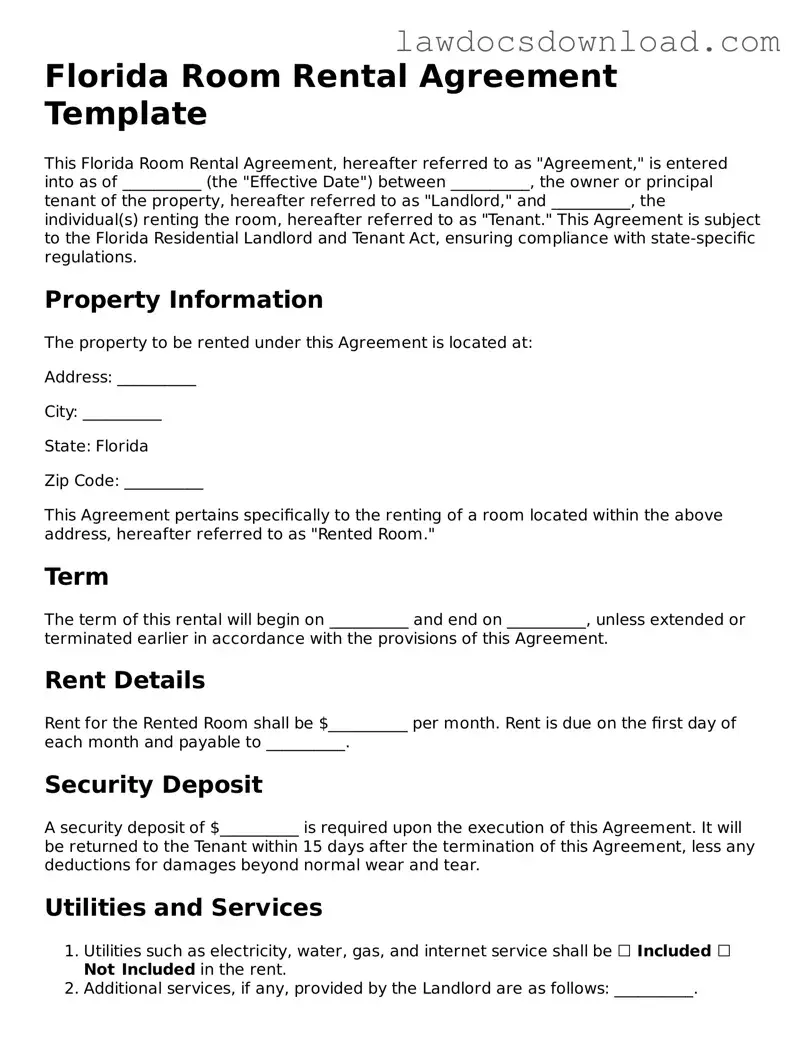Florida Room Rental Agreement Template
This Florida Room Rental Agreement, hereafter referred to as "Agreement," is entered into as of __________ (the "Effective Date") between __________, the owner or principal tenant of the property, hereafter referred to as "Landlord," and __________, the individual(s) renting the room, hereafter referred to as "Tenant." This Agreement is subject to the Florida Residential Landlord and Tenant Act, ensuring compliance with state-specific regulations.
Property Information
The property to be rented under this Agreement is located at:
Address: __________
City: __________
State: Florida
Zip Code: __________
This Agreement pertains specifically to the renting of a room located within the above address, hereafter referred to as "Rented Room."
Term
The term of this rental will begin on __________ and end on __________, unless extended or terminated earlier in accordance with the provisions of this Agreement.
Rent Details
Rent for the Rented Room shall be $__________ per month. Rent is due on the first day of each month and payable to __________.
Security Deposit
A security deposit of $__________ is required upon the execution of this Agreement. It will be returned to the Tenant within 15 days after the termination of this Agreement, less any deductions for damages beyond normal wear and tear.
Utilities and Services
- Utilities such as electricity, water, gas, and internet service shall be ☐ Included ☐ Not Included in the rent.
- Additional services, if any, provided by the Landlord are as follows: __________.
Use of Premises
The Rented Room is to be used exclusively for residential purposes by the Tenant and __________ (list of individuals, if any, authorized to live with Tenant). Pets are ☐ Allowed ☐ Not Allowed (if allowed, describe any restrictions or requirements: __________).
Maintenance and Repairs
The Tenant agrees to keep the Rented Room clean and sanitary and to notify the Landlord promptly of any damage or necessary repairs. The Landlord is responsible for making all necessary repairs to maintain the property in a habitable condition.
Termination and Notice
Either party may terminate this Agreement with a written notice of at least 30 days before the end of the monthly rental period.
Governing Law
This Agreement shall be governed by the laws of the State of Florida.
Signatures
This Agreement is entered into voluntarily by both parties and serves as a legal binding document under Florida law. By signing below, both the Landlord and Tenant agree to all terms and conditions outlined in this Agreement.
Landlord Signature: __________ Date: __________
Tenant Signature: __________ Date: __________
